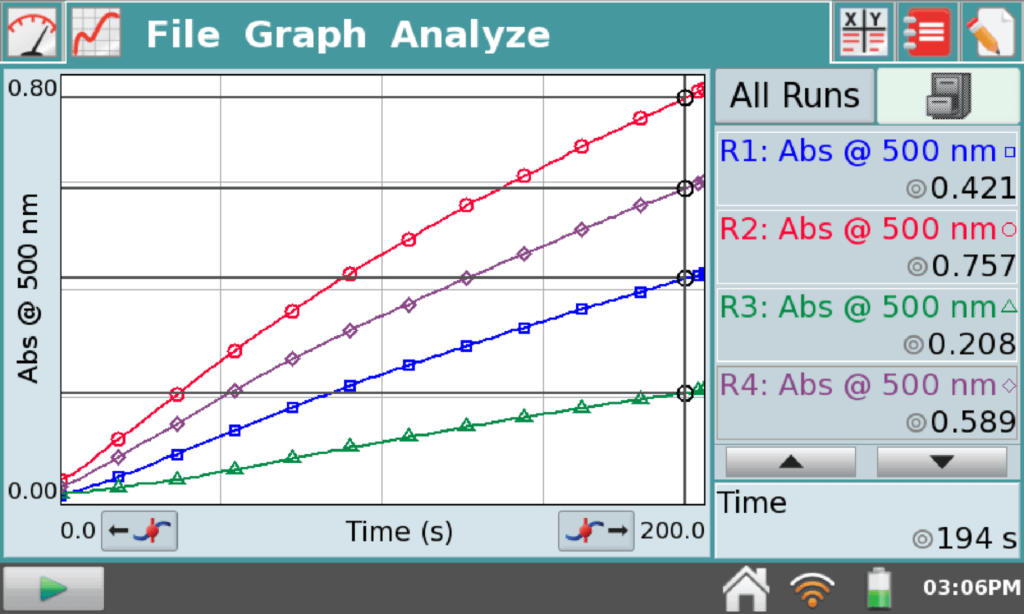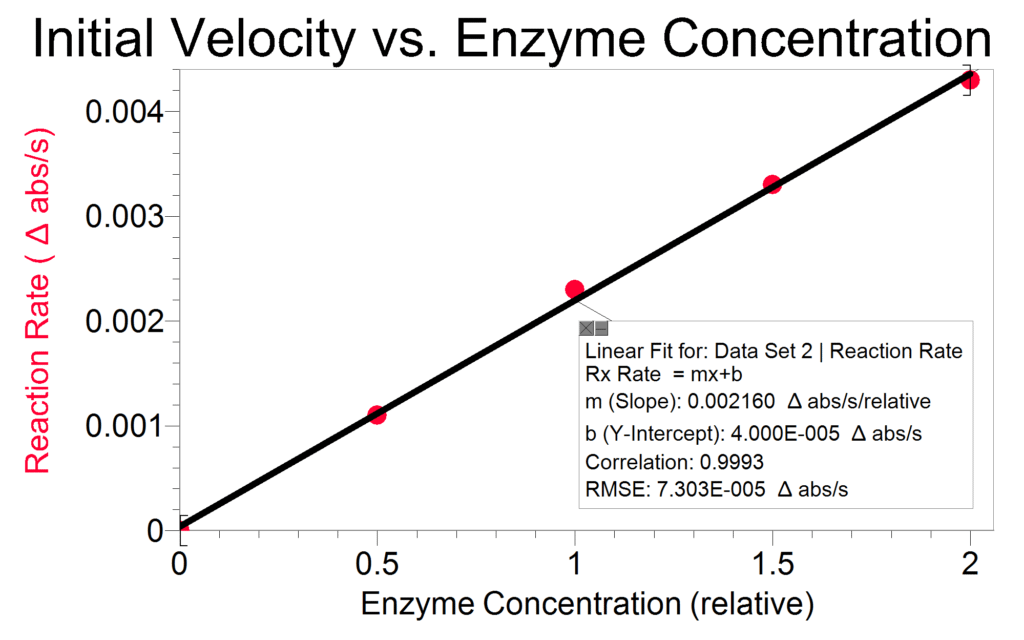Understanding how enzymes work in biological systems is a critical and difficult concept for many students. This is one reason why the enzyme investigations in our Investigating Biology through Inquiry lab book have been very popular with biology teachers. The “Testing Catalase” experiment is also popular because it is inexpensive to perform. It uses some very simple materials, such as yeast and hydrogen peroxide. However, many of our customers who teach AP Biology have been asking us to write an inquiry-based enzyme investigation modeled after the Turnip Peroxidase activity in the AP Biology Lab Manual. This is an activity that is commonly referred to as the “Guaiacol lab.”

With this in mind, the Vernier Biology Department developed a new experiment called “Enzyme Analysis with Peroxidase” that uses turnip peroxidase. As shown in the data above, this activity uses a colorimetric assay to monitor enzyme activity. As a result, you need to use a SpectroVis Plus Spectrophotometer or Colorimeter to perform this lab properly. The investigation includes a preliminary activity, teacher information, and sample researchable questions. As shown below, it also includes sample data for popular investigations, such as showing that enzyme concentration is proportional to reaction rate.

For more information about this investigation or our Investigating Biology through Inquiry lab book, contact the Vernier Biology Department at biology@vernier.com.
Download the student instructions and teacher information for Analysis of Enzymes using Peroxidase »
